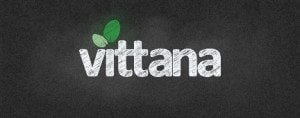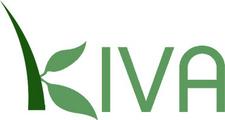 Kiva.org and Vittana.org have announced a partnership to expand access to higher education for tens-of-thousands of poor and low-income students in developing nations. Kiva is the world’s largest crowdfunding platform with a mission to alleviate poverty. Vittana is a pioneer in creating tuition loan alternatives in regions where student loans are rare, and access to higher education is out of reach.
Kiva.org and Vittana.org have announced a partnership to expand access to higher education for tens-of-thousands of poor and low-income students in developing nations. Kiva is the world’s largest crowdfunding platform with a mission to alleviate poverty. Vittana is a pioneer in creating tuition loan alternatives in regions where student loans are rare, and access to higher education is out of reach.
 Starting on April 2, all student loans sourced by Vittana.org will be posted on Kiva.org for crowdfunding rather than on the Vittana website. Visitors to Kiva.org will be able to browse through the stories and profiles of students and select one they want to support with a loan of $25 or more.
Starting on April 2, all student loans sourced by Vittana.org will be posted on Kiva.org for crowdfunding rather than on the Vittana website. Visitors to Kiva.org will be able to browse through the stories and profiles of students and select one they want to support with a loan of $25 or more.
“Kiva and Vittana believe that education doesn’t just lead to employment. Through education we can empower the youth of the world to alleviate poverty, gender inequality, violence, malnutrition, pollution and many of the other battles constantly faced around the world – nourishing a virtuous cycle of change,” said Robin Wolaner, CEO of Vittana.
 In 2014 Vittana.org and Kiva.org will help 20 thousand students access crowdfunded tuition loans in regions including Latin America, Southeast Asia, and Africa. The partnership allows Vittana.org to focus their efforts on expanding technical assistance for both student applicants and microfinance institutions (MFIs) wanting to create loans tailored for student needs.
In 2014 Vittana.org and Kiva.org will help 20 thousand students access crowdfunded tuition loans in regions including Latin America, Southeast Asia, and Africa. The partnership allows Vittana.org to focus their efforts on expanding technical assistance for both student applicants and microfinance institutions (MFIs) wanting to create loans tailored for student needs.
Vittana.org works in regions where higher education is out of reach but job opportunities exist for graduates of colleges and technical and vocational schools. It also partners with local organizations and MFIs to create tuition loan programs for students who are close to graduation, but need a little bit of money to pay final tuition and cross the finish line as graduates.
“Access to education sits at the crux of poverty and economic development,” said Premal Shah, co-founder and President of Kiva. “With Kiva and Vittana working together, we can help to break the cycle of generational poverty and expand access to higher education by proving to financial markets that students can and do pay back loans.”
Outside of the U.S. and Europe student loans are scarce, no matter how talented the student. This is due to the fact that tuition loans have no track record of repayments that banks can use to assess risk and students generally don’t have collateral or a credit history to prove that they can pay back loans.
“Without that track record, financial institutions are unwilling to offer student loan products due to perceived risk of defaults. Furthermore, without a loan product, there is no track record of repayments. It’s the classic ‘chicken or egg’ problem and someone has to be willing to take the next step. Crowdfunding is one of the few ways
to get tuition loans to students who need them,” said Sanjaya Punyasena, Vittana’s Director of Programs.
With an average loan size of $750, Vittana.org currently has a repayment rate of 99 percent, proving that students will pay back their loans if given the opportunity. As students successfully repay their loan, they are creating that repayment history and opening the door for millions of other students in the future.
“With Kiva’s proven crowdfunding track record and Vittana’s industry leadership in developing loan programs with microfinance institutions (MFIs) around the globe, this is a truly remarkable partnership that will allow Opportunity International’s MFIs and other financial institutions to offer student loans where they are either non-existent or inaccessible to the majority,” said Nathan Byrd, Head of Education Finance for Opportunity International.
 According to Vittana.org’s 2014 comprehensive impact report, among Vittana.org students surveyed, 85 percent were employed a year after graduation. Students were also able to increase their incomes by an average of 93 percent. The collective increased earnings of 20 thousand students is more than $65 million per year, helping lift themselves, their families, and their communities out of poverty.
According to Vittana.org’s 2014 comprehensive impact report, among Vittana.org students surveyed, 85 percent were employed a year after graduation. Students were also able to increase their incomes by an average of 93 percent. The collective increased earnings of 20 thousand students is more than $65 million per year, helping lift themselves, their families, and their communities out of poverty.
“If every qualified student could go to college, technical or vocational school, the impact would be billions of dollars. We believe that in 20 years, that universal access can and must happen,” said Punyasena.
_______________________________
[scribd id=209013727 key=key-2a8lx7xkvlt674ue7pkf mode=scroll]

